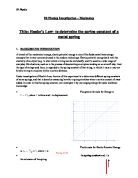Table 1: changing lengths for each of the 15 trials with different masses
Initial length of the spring = 0.220 m
DATA PROCESSING & PRESENTATION
Calculations:
According to Hooke’s Law when a mass is suspended on a spring which has a constant of k, the following equation can be obtained F = m.g = k.x. during the calculations these formula will be used.
Calculation of F (N)
F= weight of the object = mass (m) x gravitational accelaration (g)
g is assumed to be 9.78 m.s-2
The mean of spring conrstants is 18.37 N/m.
Calculation of the spring constant k (N/m)
F= kx
Graph 1: Graph of Force vs. Elongation in the spring.
The slope of the F-x graph gives the spring constant. Therefore the spring constant is found to be 36.42 N/m.
Percent Error= |kslope – kmean|/kslope x100
|36.42- 18.37|/36.42 x 100
49.56%
Conclusion and Evaluation:
By conducting this experiment, Hook’s Law of springs is tested and it is observed and it may be concluded that Force and Elongation are directly proportional to each other., whilst the same spring is used. That is due to the increase in weight, inevitably in force applied to the spring. The spring constant is found to be 36.42 N/m. So we can conclude that if we had the situation to put a weight of 36.42 N at the end of the spring the elongation would be one meter.
Sources of Error:
- Poorly calibrated instruments
- The inevitability of air resonances and different conditions in the lab.
- Human reaction time
- Human parallax error
- Errors occurred in rounding data
- Elasticity of the of the spring
- Ignoring the weight of the spring
Increased number of trials would lessen the error rate. Equipments used are to be highly calibrated, such a spring is to be used that is not loosened because of the forces over its elastic limit, otherwise spring will lose its ability to return to its original position, hence the accuracy of the experiment will be deteriorated. On the other hand, Graph 2 the bestline doesn’t intersect with origin, even though according to the formula of Hook’s Law it must. This situation is a consequence of ignoring the weight of the spring, as it is one of the components of force that provides elongation. Not using the weight of the spring makes our results less accurate. The experiment is to be conducted by the same equipments, such as the scales and rules for each trial, inevitably the data collected will be more precise.







